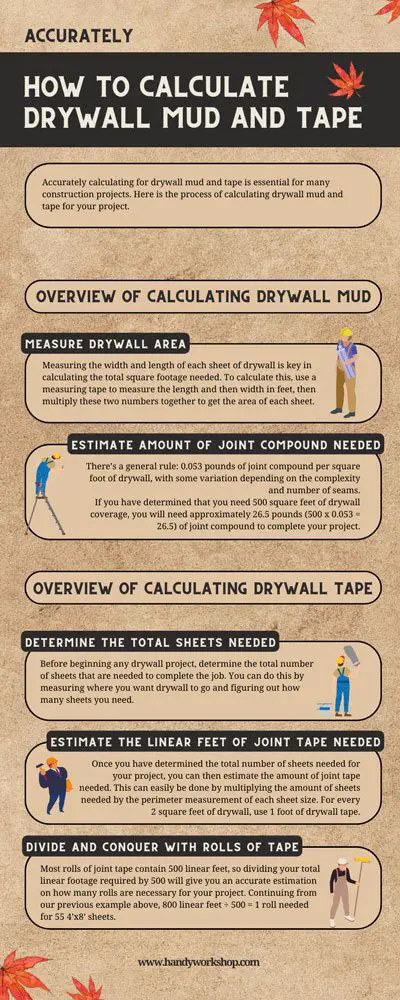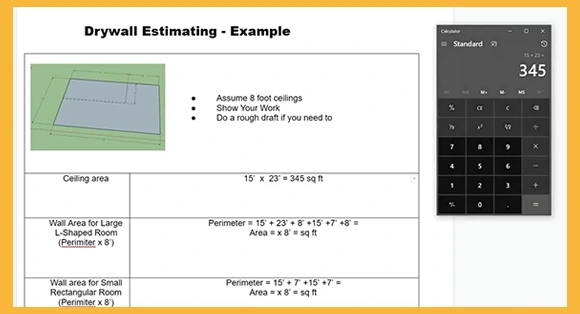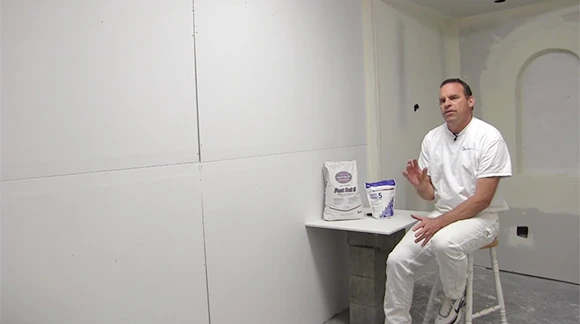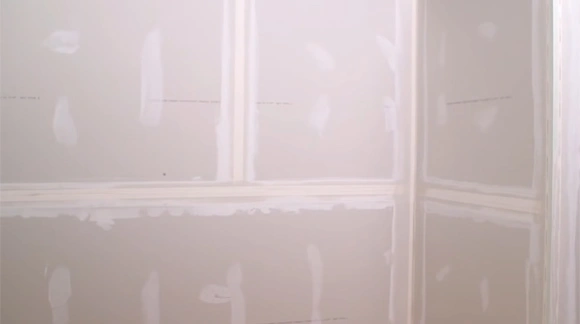Last Updated on March 29, 2023
If you’re into DIY or home improvement, it’s time to master the art of drywall mud and tape calculation. Taking a few moments to figure out how to calculate drywall mud and tape for each job will save plenty in terms of money, energy, and stress.
Put a little mud into the equation: 0.053 pounds per square foot of drywall and 1 foot of tape for every 2 feet. To get the exact amount needed, figure out the area in need by multiplying length x width for each wall you’re covering with materials.
Get the professional look you want in your home with precise calculations. We’ll take a deep dive into how to calculate drywall mud and tape, as well as why making precise measurements is key.
How to Calculate Drywall Mud and Tape: Accurately
Accurately calculating for drywall mud and tape is essential for many construction projects. Here is the process of calculating drywall mud and tape for your project.

Overview of Calculating Drywall Mud
Step 1. Measure Drywall Area
Measuring the width and length of each sheet of drywall is key in calculating the total square footage needed. To calculate this, use a measuring tape to measure the length and then width in feet, then multiply these two numbers together to get the area of each sheet.
Once you have done this for all sheets, add up all of the individual areas together for your total square footage. Take notes on any areas that will require additional joint compound, as this can affect how much mud you need overall.
Step 2. Estimate Amount of Joint Compound Needed
There’s a general rule: 0.053 pounds of joint compound per square foot of drywall, with some variation depending on the complexity and number of seams.
If you have determined that you need 500 square feet of drywall coverage, you will need approximately 26.5 pounds (500 x 0.053 = 26.5) of joint compound to complete your project.
When using a mud calculator, you can adjust factors such as seam number, complexity, and compound type to get more accurate mud calculations. For more accurate estimates of the amount needed for a specific project size and scope, use a general guideline like the one above.
Overview of Calculating Drywall Tape

Step 1: Determine the Total Sheets Needed
Before beginning any drywall project, determine the total number of sheets that are needed to complete the job. You can do this by measuring where you want drywall to go and figuring out how many sheets you need.
Common sheet sizes include 4’ x 8’ or 4’ x 12’ and should account for any structural support that may be necessary. For example, if covering a room that is 14 feet long by 14 feet wide with 4’ x 8’ sheets, a total of 28 sheets will be needed to cover the entire area.
Step 2: Estimate the Linear Feet of Joint Tape Needed
Once you have determined the total number of sheets needed for your project, you can then estimate the amount of joint tape needed. This can easily be done by multiplying the amount of sheets needed by the perimeter measurement of each sheet size. For every 2 square feet of drywall, use 1 foot of drywall tape.
For example, if a project involves 10 sheets, then 120 feet (10 x 24/2) would be needed. It’s worth noting that no tape is used where the drywall intersects the floor, allowing for some margin or error in this estimation.
Step 3: Divide and Conquer with Rolls of Tape
Most rolls of joint tape contain 500 linear feet, so dividing your total linear footage required by 500 will give you an accurate estimation on how many rolls are necessary for your project. Continuing from our previous example above, 800 linear feet ÷ 500 = 1 roll needed for 55 4’x8’ sheets.
Also available in rolls of 60 feet or 250 feet, you’ll have just the right amount for convenience, no matter how ambitious that job might be.
The Benefits of Accurately Calculating Drywall Mud and Tape

1. Achieving an Evenly Finished Surface
Correctly calculating drywall mud and tape is essential in achieving an evenly finished surface. An accurate calculation ensures that the right amount of material is applied to the drywall, which prevents excessive bulging or uneven patches.
Using this calculation, you can avoid problems like gaps or tiny holes caused by too much material. Accurately calculating the amount of drywall mud and tape allows for greater control over the thickness and consistency of the finish.
2. Reducing the Possibility of Warping, Cracking or Splitting
Accurately calculating drywall mud and tape can help reduce the possibility of bending, cracking, or splitting due to excessive stress on the structure caused by the incorrect application.
Warping occurs when too much weight is applied to one area, while cracking is often caused by improper drying times as well as insufficient support during installation. Splitting can occur when too much pressure is put onto wet material during the taping and mudding work.
Accurate measurements can help avoid these issues along with potentially costly repairs and replacements down the road.
3. Minimizing Unnecessary Material Waste
Both contractors and homeowners can save money by reducing unnecessary material waste when mudding and taping drywall. Workers are able to avoid making excessive batches due to inaccurate estimates when mixing up batches for each job.
The accurate calculation also helps ensure that no material is wasted due to a lack of material on hand.
4. Saving Time and Money on Repairs
Taking the time to measure accurately can save both contractors and homeowners from having to spend extra money on tools or labor hours down the road.
How Much Drywall Mud Do I Need Per Sheet?

Typically, you will need to use 1.5 to 2 lbs. of drywall mud for every 4×8 sheet that needs to be finished. It is necessary to spread this amount of mud evenly and properly over the entire area in order to ensure that it adheres correctly and completely covers all areas.
How Many Square Feet Does a Bucket of Drywall Mud Cover?
A single bucket of drywall mud will typically cover around 500 sq ft of area. However, this number can vary depending on the thickness and spread rate of the drywall mud being used.
In general, if you plan on using a thicker layer, then you should expect fewer square feet out of a single bucket. Most standard applications require two 4.5 gallon pails of joint compound to finish 1000 square feet, providing 500 square feet per pail.
How Many Square Feet Does a 5 Gallon Bucket of Mud Cover?
A 5 gallon bucket of mud (joint compound) will generally cover 365 square feet when applied as directed. It is important not to apply too thickly as this may result in needing more than one bucket for the same amount of area.
When using a thinner layer it may take longer for certain jobs that require more coverage, such as patching large holes in walls or ceilings. In this case, more than one 5 gallon bucket may be necessary in order to achieve desired results within acceptable timelines.
Achieve Professional Results With Accurate Measurements of Drywall Mud and Tape

Calculating drywall mud and tape accurately can help ensure that your walls look professional after installation and also prevent any potentially costly mistakes due to incorrect measurements.
With a little bit of effort and practice, you can make sure your drywall project looks great with accurate measurements of mud and tape. By taking accurate measurements, you can avoid wasting money on materials that might not have been necessary in the first place.
So if you’re planning on doing some work with drywall in your home, be sure to take accurate measurements so you don’t end up disappointed with the final results. With these tips in mind, you should now have a better understanding of how best to calculate your material needs for any given setting.



